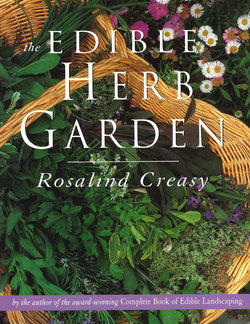Читать книгу The Edible Herb Garden - Rosalind Creasy - Страница 8
На сайте Литреса книга снята с продажи.
Оглавлениеencyclopedia of culinary herbs
The following is a detailed list of the most common culinary herbs. The basic cultural information about how to prepare the soil, planting techniques, seed starting, irrigation, mulching, fertilizing, pruning, and pest and disease control is covered in Appendixes A and B.
For each entry the common name of the herb is given as the title, followed by the herb's Latin name. The first word in a Latin name is the plant's genus, namely, a small group of plants that are closely related and similar to each other. The second name is the species. These are plants that are so closely related they are able to interbreed. When more than one species is being described in the entry they are designated as spp. It is critical to use the Latin name of unfamiliar edible plants as the common names of plants change from region to region and may be used to describe plants that are not edible, even ones that are toxic.
The herbs I have chosen to cover here are my favorites. Many of the herb entries include named cultivated varieties that are designated by single quotes. These select varieties (also known as cultivars) are most often available only from specialty herb nurseries. I have chosen them for their unusual foliage or flavor variations and I find them worth seeking out.
I have also included a number of exotic herbs. Some have there own unique flavors, others have tastes similar to familiar herbs and can be used as substitutes for the more common herbs in the warmest summer areas. To purchase the more unusual varieties you need to seek out specialty herb growers.
ANGELICA
Angelica archangelica
ANGELICA IS A LARGE-LEAFED herb that grows up to six feet and more. In humid climates it can be a dramatic backdrop to a flower border. Both the aromatic leaves and the stems impart a slight anise flavor and are used in numerous savory dishes.
